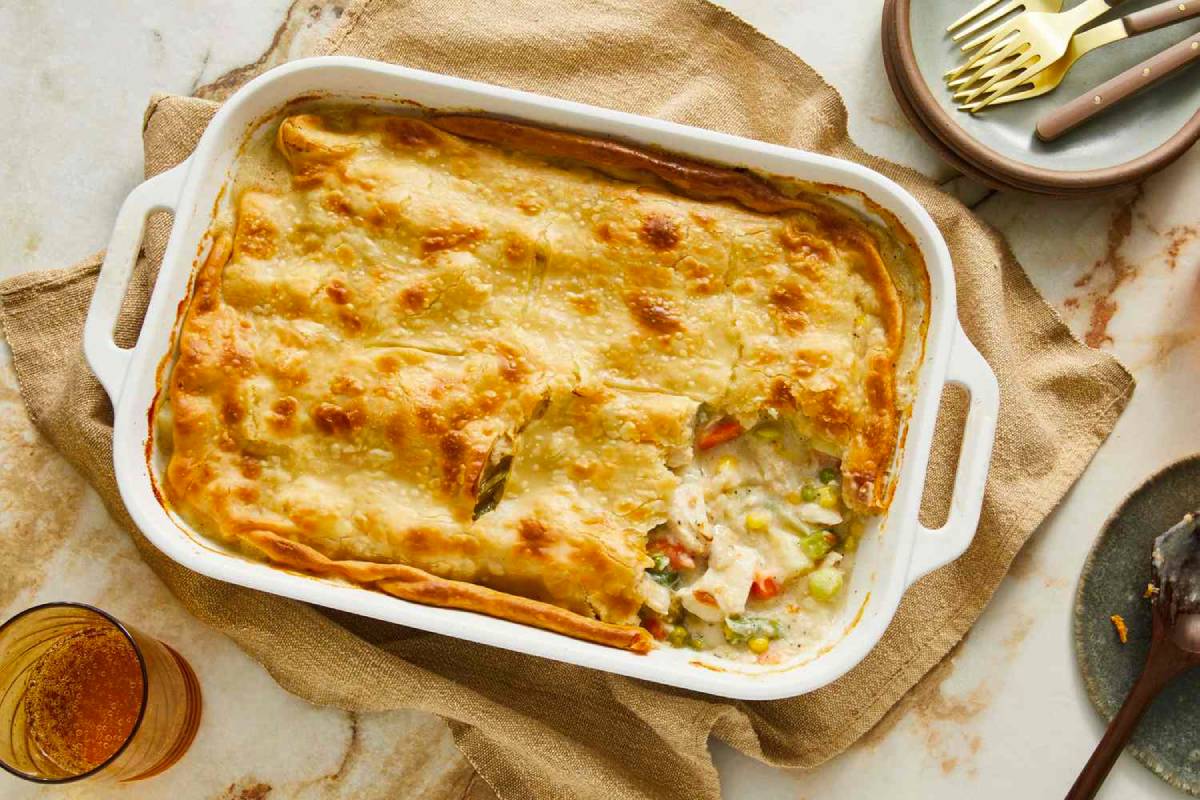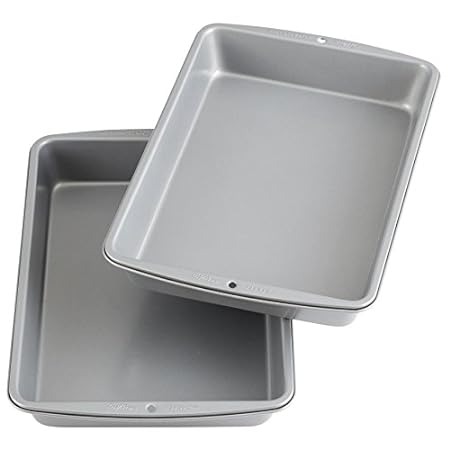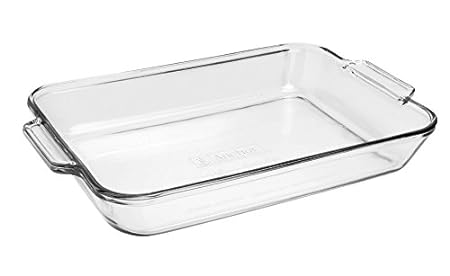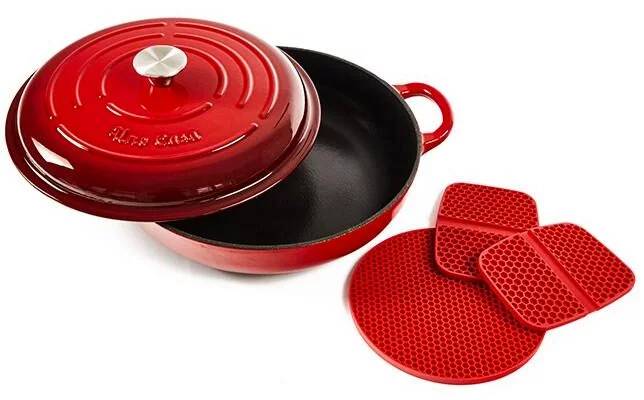• Cast Iron
When and How to Use a Casserole Dish

Reviewed by Trinity Anderson
Last Updated December 2023

Casserole dishes are an essential component of every kitchen, deeply ingrained in the daily routine. Each individual possesses a cherished casserole dish, while some may have one tucked away in the depths of their kitchen cabinets, untouched and forgotten. The superiority of certain baking dishes and the irreplaceable flavor they lend to specific meals is a phenomenon worth noting.
What is a casserole dish?
A casserole pan serves as a versatile baking dish for both cooking and serving food. It is equipped with a tight-fitting lid that facilitates the circulation of heat, enabling the preparation of slow-cooked meals without the need for a slow cooker. These pans are available in a range of shapes, capacities, and materials, each catering to specific cooking requirements.
The choice of material greatly impacts the cooking quality, flavor, and storage of your food. Different materials offer unique advantages when it comes to meal preparation.
Different materials are used to make casserole dishes, each with its own unique properties. Glass and ceramic dishes are visually appealing and distribute heat evenly. They retain heat for a long time, making them ideal for keeping food warm.
However, it's important to let these dishes cool down completely before refrigerating food, as they are not suitable for sudden temperature changes. On the other hand, aluminum pans are commonly used for disposable catering trays due to their lightweight nature. While they are great for browning food and conducting heat efficiently, they are not recommended for storing food. Stainless steel pans, on the other hand, are cost-effective and lightweight, making them suitable for various dishes including cakes.
Lastly, cast-iron casserole dishes are versatile as they can be used on both stovetops and ovens. This allows for easy transfer of food from the stove to the oven without the need for additional pans or dishes.
The best baking dish for cakes
Metal baking pans are perfect for creating delectable cakes, cookies, brownies, and various other sweet delights. For those who frequently bake cakes, non-stick coated pans are highly recommended. Most bakers opt for aluminum or stainless steel casserole pans with a non-stick coating. Metal is an excellent conductor, ensuring evenly baked goods.

On the other hand, ceramic and glass casserole dishes often have curved edges and corners, which can make removing a cake a bit more challenging than desired. Consequently, many bakers prefer the clean and precise edges of a metal casserole dish.
The perfect dish for acidic foods
Acidic foods, like tomatoes, vinegar, or lemon-based sauces, have the ability to react with metals and extract a metallic taste from the dish. This metallic flavor has the potential to spoil a delicious meal and even alter its appearance. Hence, it is advisable to avoid using metal casserole dishes. Instead, opt for glass or ceramic casserole dishes when preparing meals such as lasagna, cacciatore, or any dish that includes tomato sauce.

In certain cases, it may be acceptable to bake an acidic meal in a metal pan if the cooking duration is short. However, it is important to note that food should not be stored in a metal pan as the metallic taste can persist and become more pronounced over time. On the other hand, a cast-iron casserole dish with an enamel coating on the inside is completely safe to use with acidic foods. The enamel layer acts as a protective barrier between the metal and the food, preventing any unwanted reactions.
Caring for and cleaning your baking pan
Proper care and maintenance of your casserole bakeware is essential for its longevity. Different materials require different cleaning methods to ensure they stay in optimal condition. Follow these guidelines to keep your casserole pans in great shape:
1. For cast-iron dishes, gently scrape off any food residue and wipe them down with a cloth. If your cast-iron has an enamel coating, you can store it after cleaning without the need for seasoning. However, do check if your cast-iron bakeware requires seasoning. Don't forget to clean the lid as well.
2. Glass and ceramic bakeware can be soaked in a mixture of dish soap and baking soda for 15 minutes. After soaking, clean the dish with hot water, just like you would with any other dishes. If left unattended for too long, stains and grease marks can become stubborn and difficult to remove.
3. Non-stick coated pans should not be scrubbed with abrasive materials, as this can damage the top coating. Instead, use warm water and dish soap along with gentle wiping to clean them effectively.
By following these care instructions, you can ensure that your casserole bakeware remains in top shape and continues to serve you well.
Popular choices
After selecting the ideal material, the next consideration is the size of the casserole dish. Many households possess various sizes and shapes of dishes. Opting for a 12-inch round casserole dish is a reliable choice, especially for a family meal.
There are also other shapes available, each with their own sizes and capacities:
Square:
- 8 x 8-inch with a capacity of 2 quarts
- 7 x 11-inch with a 2-quart capacity
- 9 x 9-inch with a 2.5-quart capacity
- 9 x 13-inch, with a 3-quart capacity
Round:
- 9 x 5 x 9-inch with a capacity of 1.5 quarts
- 11 x 4 x 11-inch and 12 x 4 x 9-inch, both with a capacity of 2.5 quarts
- 16.1 x 10.6 x 3.4-inch with a 3-quart capacity
While these sizes are considered standard, the actual capacity may vary depending on the brand. It is crucial to choose the appropriate casserole dish size as it can significantly impact the outcome of your recipe. Remember to adjust your recipe accordingly to ensure the best results.
Versatile and beautiful

Enameled cast-iron is widely regarded as the top choice for a casserole dish that combines versatility with elegance. Unlike many other casserole dishes, cast-iron ones are suitable for stovetop cooking. They offer great versatility, allowing you to prepare a variety of dishes, especially those that require slow cooking to achieve perfection.
These dishes are ideal for catering purposes as they excel as serving dishes. They have excellent heat retention properties, ensuring that food stays warm throughout the serving process.